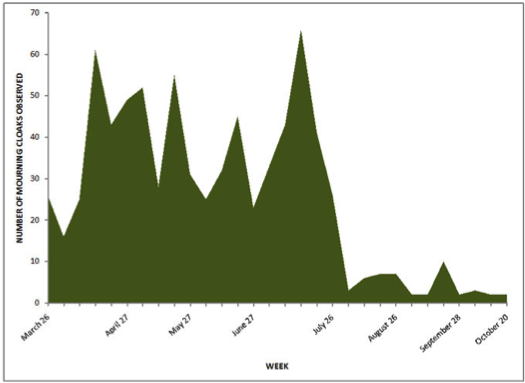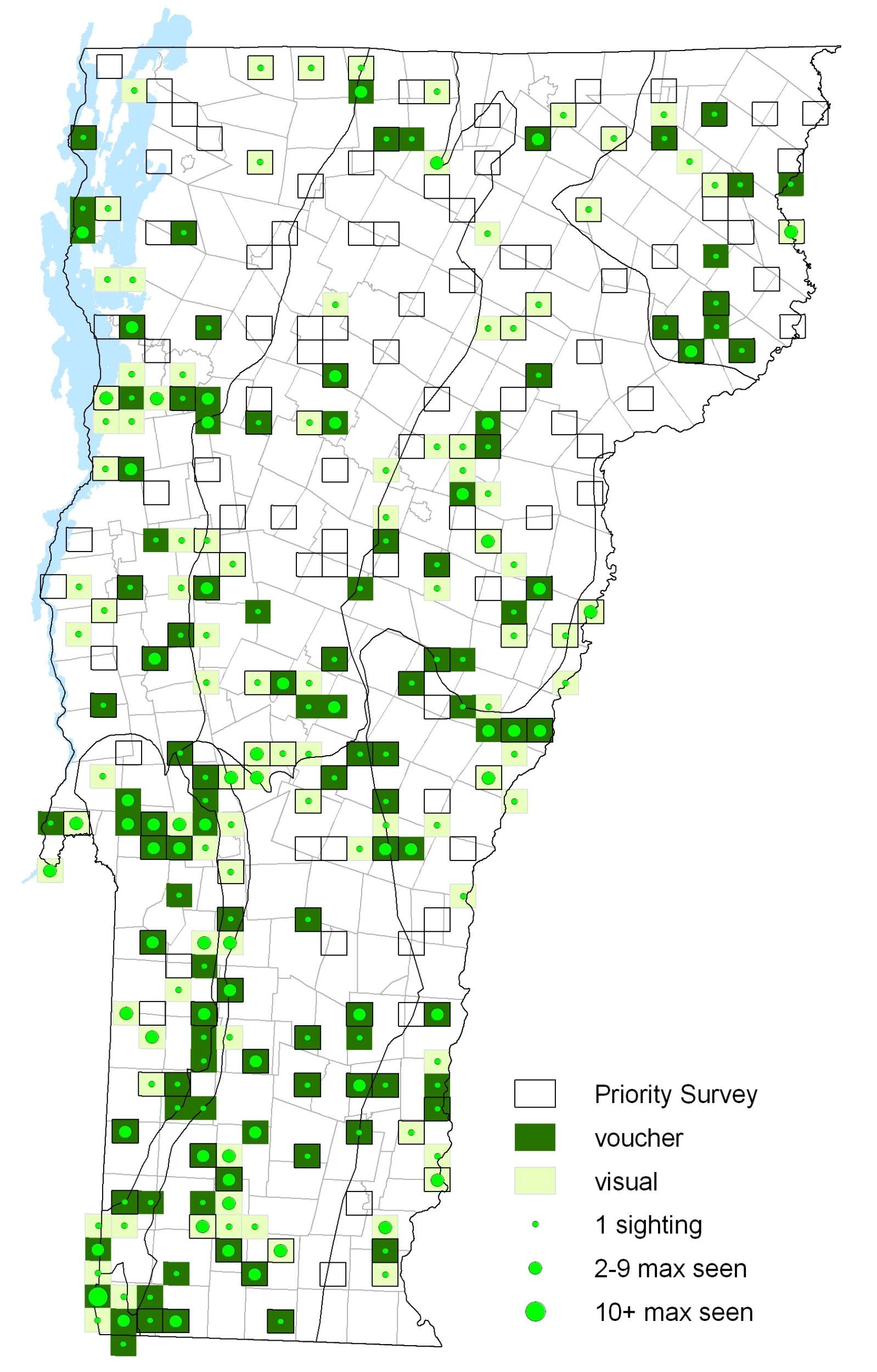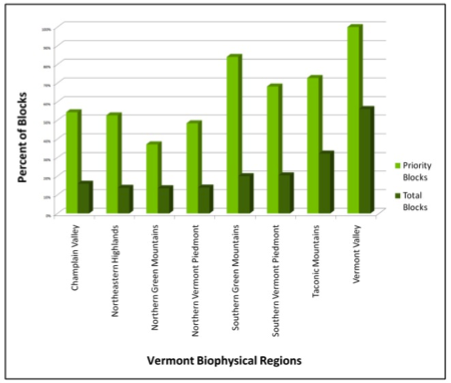|
Resident Conservation Status North American Range |
Though there are other butterflies that appear on early spring days, there are none that hail the coming of warm weather quite like the Mourning Cloak. Overwintering adults crawl out of crevices on the first sunny days to feed on oozing sap. To survive the cold, they produce glycerols in their blood to prevent formation of ice in their body tissues. On cold spring days, they shiver to raise their internal temperature to as much as 15 F above ambient air temperature. Overwintered adults mate in the spring, and the males perch in sunny openings during the afternoon to wait for receptive females. Eggs are laid in groups circling the twigs of the hostplant. Caterpillars live in a communal web and feed together on young leaves, then pupate and emerge as adults in June or July. After feeding briefly, the adults aestivate until fall, when they re-emerge to feed and fatten for the winter. Some adults migrate south in the fall.
Identification
Short projections on both wings, borders irregular. Upperside is purple-black with a wide, bright yellow border on outer margins, and a row of iridescent blue spots at the inner edge of the border.
Flight
One generation. Highest numbers in July probably correspond with the mating of the overwintered adults in spring and the emergence of their brood, followed by late summer aestivation and dramatic decline in records. Apparent migration movements reported in the Champlain Valley on 12 October 2003 (S. Riley). Extreme dates: 26 March 2004 in Rupert (D. Rolnick) and 20 October 2007 in Pownal (K. Hemeon).
Distribution and Habitat
Scudder (1889) wrote that, “It is found in nearly equal abundance throughout all parts of New England…and is nearly everywhere so numerous as to become positively injurious on account of the damage done to some of our choicest ornamental trees.” During VBS it was recorded throughout the state, with perhaps slightly less frequency in the northern areas. They are adaptable generalists and will choose habitats wherever their hostplants are found. Hostplants are variable and include willows (Salix), elm (Ulmus), aspen (Populus), birch (Betula), hackberry (Celtis) and others more infrequently. Larvae were found on cherry (Prunus) during VBS (J. Lam). Older caterpillars wander and may be found on plants that they do not eat.







